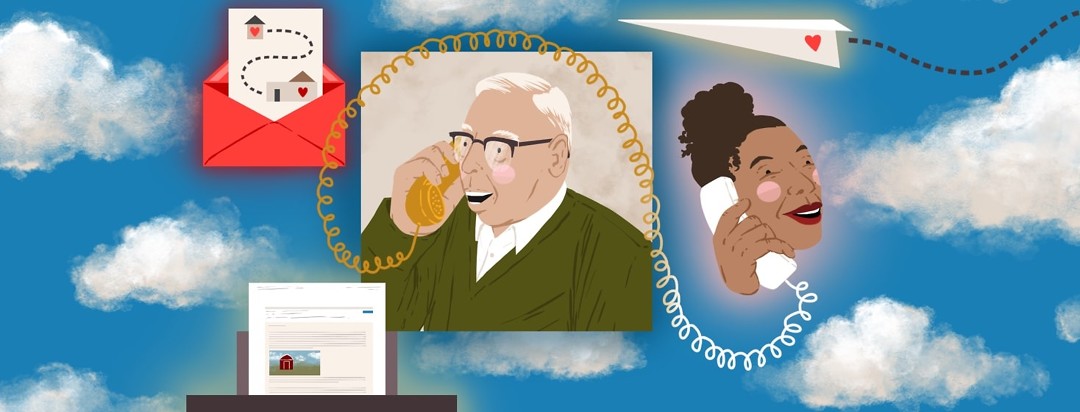Things to Do When Long-Distance Caregiving
We visited Daddy often when he was in a nursing facility. No matter how often that was, it never really felt like enough. Life happens, work gets busy, schedules overflow, and other family responsibilities can sometimes take a front seat. It's so hard for both parties when a person with Alzheimer's disease or dementia and a relative or friend can't visit as often as they would like. There are things you can do, though, to ease the ache for everyone when caregiving from a distance.
Comforts of home
We tried to make things as familiar as possible in Daddy's room. We hung lots of photos of family members. The clothes he was used to wearing were hung in the closet. We left a plush blanket that belonged to him in his room. We decorated his room for holidays and seasons. We left a few familiar knick-knacks. We also left snacks for him.
Facility policy may override some of these things, but any familiarity will help make the transition easier while letting them keep a connection to home.
Long-distance caregiving: phone calls
This is a great way to keep in touch if your loved one is still able to maneuver a phone on their own or with the help of facility staff. Your loved ones would be so happy to hear your voice over the phone.
Daddy could not use his cell phone and had language deficits at the point when we moved him into the nursing facility. The nurse staff was great, though; we knew they were just a call away if we wanted to send a message or check in. This gave us peace of mind from a distance.
Send letters and cards
Everyone loves getting mail. Dropping some photos, a letter, a card, or a child's drawing in the mail is such a simple thing to do, even if you are hundreds of miles apart.
Daddy adored drawings and letters that his granddaughter sent him. Sending mail will help you feel connected, and let your loved one know that you are thinking of them. Even if their condition is advanced, a simple gesture still brightens their day. The payoff is so much greater than the effort.
Send electronic mail
If you can't send letters by mail, there is email. I have seen several local nursing homes advertising their email services lately. I also know that many hospitals use a similar system.
Even if someone does not have a device or internet access, you can email the person by filling out a form online. You can specify a person's name and room number and compose a message in the body of the form. Facility staff members print out these emails daily and hand them out to residents. This is almost as great as receiving snail mail. Plus, it's faster and free.
Recruit other familiar faces
If something hinders you from visiting, you can always ask someone you trust to go check in. Multiple visitors showing up at different times of the day or days of the week can assure you that the facility is meeting your expectations.
Daddy had visits from several family members and enjoyed time outside by the koi pond with them. Even when Daddy couldn't recall names, he recalled faces and knew "his people" when he saw them. It was obvious by his demeanor and reaction. He so enjoyed spending time with his family.
Showing love and caregiving from a distance
These are just a few suggestions for staying connected from a distance. The condition and cognition of the person with dementia may determine how interactive or reciprocal the connection will be.
However, any connection or effort will, at the very least, spark moments of happiness in their lives. Knowing they have moments of happiness will give you peace and comfort in return. Tell us about your experience with long-distance caregiving in the comments below, or share your story with the community.
Interested in more on progression and support through Alzheimer's? Check out Alzheimer's Progression: Support Through the Stages.

Join the conversation